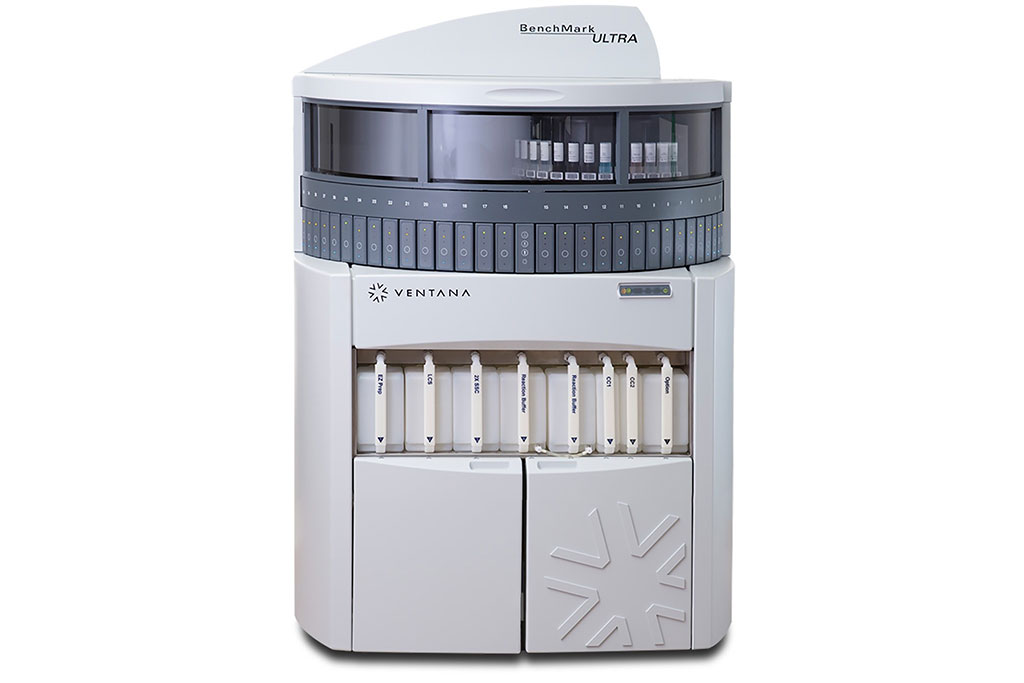Gene Expression Profiling of Mucinous Ovarian Tumors Identifies Prognosis Markers
Posted on 18 Oct 2022
Advanced stage mucinous ovarian tumors have poor chemotherapy response and prognosis and lack biomarkers to aid Stage I adjuvant treatment. Differentiating primary mucinous ovarian carcinoma (MOC) from gastrointestinal (GI) metastases to the ovary is also challenging due to phenotypic similarities.
MOC is a rare histological type that is less well characterized compared to more common ovarian cancer histotypes. A clinical problem frequently encountered in patients diagnosed with advanced stage MOC is the uncertainty as to whether the primary cancer is ovarian or metastatic from other sites. Metastases typically originate from the gastrointestinal (GI) tract, and the primary tumor may not be evident at surgery or on imaging.

A large international team of Medical Scientists led by the group at The University of New South Wales (Sydney, Australia) analyzed clinicopathological and gene expression data were to identify prognostic and diagnostic features. Discovery analyses selected 19 genes with prognostic/diagnostic potential. Validation was performed through the Ovarian Tumor Tissue Analysis consortium and GI cancer biobanks comprising 604 patients: 333 with MOC, 151 with mucinous borderline ovarian tumors (MBOT), 65 with upper G, and 55 with lower GI tumors.
RNA samples from a total of 634 patients were eligible for the NCounter PlexSet assay (Nanostring, Seattle, WA, USA) extracted from either 403 formalin-fixed, paraffin embedded (FFPE) whole sections, 191 FFPE cores, or 40 fresh-frozen sections. A second sample was analyzed in a subset of 33 patients: either multiple blocks from the same tumor or multiple tumor tissue sites. The team performed ERBB2/HER2 immunochemistry (IHC) using anti-HER2/neu (4B5), and Silver-enhanced in situ hybridization (SISH) using HER2/Ch17 Dual ISH DNA Probe Cocktail, (Roche Diagnostics, Indianapolis, IN, USA). Staining was performed on the Ventana Benchmark ULTRA Platform (Roche Group, Tucson, AZ, USA) on 4 µm tissue microarray sections for a subset of cases from one study.
The investigators reported that infiltrative pattern of invasion was associated with decreased overall survival (OS) within 2-years from diagnosis, compared with expansile pattern in Stage I MOC (hazard ratio HR 2.77). Increased expression of THBS2 and TAGLN were associated with shorter OS in MOC patients, (HR 1.25) and (1.21) respectively. ERBB2 (HER2)-amplification or high mRNA expression was evident in 64/243 (26%) of MOCs, but only 8/243 (3%) were also infiltrative (4/39, 10%) or Stage III/IV (4/31, 13%).
The authors concluded that an infiltrative growth pattern infers poor prognosis within 2-years from diagnosis and may help select Stage I patients for adjuvant therapy. High expression of THBS2 and TAGLN in MOC confer an adverse prognosis and is upregulated in the infiltrative subtype which warrants further investigation. Anti-HER2 therapy should be investigated in a subset of patients. MOC samples clustered with upper GI, yet markers to differentiate these entities remain elusive, suggesting similar underlying biology and shared treatment strategies. The study was published on October 12, 2022 in the journal Clinical Cancer Research.
Related Links:
The University of New South Wales
Nanostring
Roche Diagnostics
Roche Group














